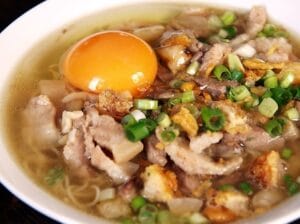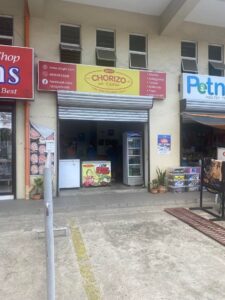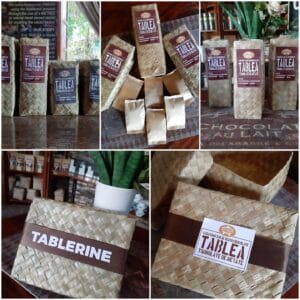
About Us
Jocyl's Food Products (a.k.a "Chorizo de Kalibo") is a bold and forward-thinking company whose goals are set to create surprising ways of developing and promoting our products. We are entrepreneurial and visionary in producing and marketing the best chorizo and other food products from our hometown - Kalibo, Aklan, Philippines.
About UsContact Info
- Tigayon Highway, Barangay Tigayon, Kalibo, Aklan
- +63362628688
- jocylsfoods@gmail.com
- Tigayon Highway, Barangay Tigayon, Kalibo, Aklan
- jocylsfoods@gmail.com
- +63362628688

What is Ilonggo Food? Discover the Rich Flavors of Western Visayas Cuisine
-
Jocyl's Food Products > Blog > Delicacies > What is Ilonggo Food? Discover the Rich Flavors of Western Visayas Cuisine
Understanding Ilonggo Culture Through Food
To truly understand what Ilonggo food is, we first need to understand the Ilonggos themselves—residents of Western Visayas, primarily Iloilo and Negros Occidental. Food is not just nourishment in Ilonggo culture—it’s a language of love, hospitality, and pride.
Meals are often family-centric events, with recipes passed down from generation to generation. Food represents more than sustenance; it’s part of celebrations, religious traditions, and even everyday conversations.
The Ilonggo dialect is known for its melodious and gentle tone, and their food shares the same soothing, comforting quality—rich in flavor but not overpowering, lovingly prepared with attention to detail.
Origins of Ilonggo Cuisine
Ilonggo cuisine reflects a rich blend of indigenous traditions, Spanish colonization, and Chinese influences. Rooted deeply in Hiligaynon-speaking communities, it draws from coastal bounty and upland produce.
The Spanish era introduced methods like sautéing and the use of ingredients like tomatoes and garlic.
Indigenous methods like cooking with batuan, a local souring fruit, have endured through time.
Chinese merchants introduced noodles and dumplings, leading to creations like Pancit Molo.
This culinary evolution makes Ilonggo food a beautiful representation of Filipino resilience and adaptability.
Key Ingredients in Ilonggo Cooking
At the heart of Ilonggo cuisine lies a vibrant mix of local and tropical ingredients. Here are some essentials:
| Ingredient | Use in Ilonggo Dishes |
|---|---|
| Batuan fruit | Used as a natural souring agent |
| Tanglad (lemongrass) | Adds aroma to stews and grilled meat |
| Coconut milk | Used in both savory dishes and desserts |
| Seafood | Shrimp, fish, and squid are staples |
| Root crops | Like cassava and sweet potatoes |
| Kadyos (pigeon peas) | Mainstay in KBL (Kadyos, Baboy, Langka) |
The unique combination of flavors—sweet, sour, and savory—defines the Ilonggo palate.
Popular Traditional Ilonggo Dishes
Batchoy: Iloilo’s Signature Dish
Possibly the most iconic Ilonggo dish, La Paz Batchoy is a noodle soup topped with pork innards, crushed chicharon, scallions, and egg. Invented in the La Paz district of Iloilo City, popular versions include Ted’s, Deco’s, and Netong’s.
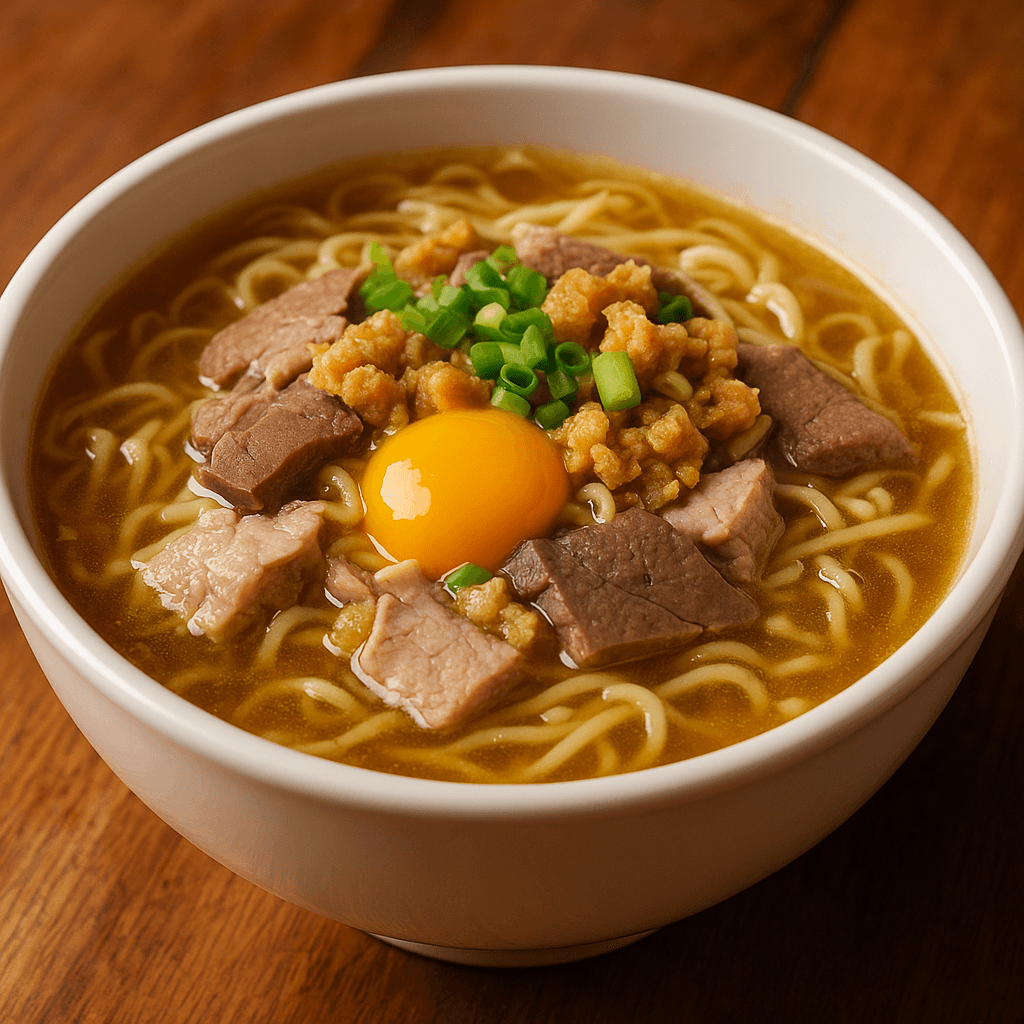
Kansi: A Bacolod Favorite
Kansi is a beef stew with a sour batuan broth, somewhere between bulalo and sinigang. It often includes beef shank with marrow and sometimes jackfruit.
Pancit Molo
Not your typical pancit—Pancit Molo is a dumpling soup, more like a Filipino version of wonton soup. It hails from Molo district and showcases Chinese influence on Ilonggo cuisine.
KBL: Kadyos, Baboy, Langka
A humble yet hearty stew of pigeon peas (kadyos), pork (baboy), and unripe jackfruit (langka), usually soured with batuan. It’s a comforting, earthy dish.
Unique Cooking Techniques in Ilonggo Cuisine
Ilongo dishes often use slow-cooking to extract deep flavor. Traditional cooking also includes:
Clay pot cooking for enhanced earthiness
Bamboo grilling for a smoky flavor
Using banana leaves for wrapping or steaming food
Soups often use natural souring agents instead of vinegar
These methods ensure the flavors stay true to tradition.
Ilonggo Street Food Culture
Street food in Iloilo and Bacolod reflects the region’s playful and flavorful soul:
Chicken Inasal: Marinated and grilled chicken, usually served with sinamak (spiced vinegar)
Isaw, tenga, and betamax: Barbecued offal and coagulated blood
Piaya: A flaky flatbread filled with muscovado sugar
Barquillos: Thin rolled wafers, often eaten alone or with ice cream
Walking through the Iloilo Esplanade or Bacolod’s Manokan Country, you’ll encounter these mouthwatering delights at every turn.
Sweet Treats and Desserts
The Ilonggo sweet tooth is well-documented:
Napoleones: A layered pastry filled with custard and glazed on top
Baye-baye: Sticky rice cake made with coconut and pinipig
Butterscotch Bars: Famous delicacies often brought home as pasalubong (souvenirs)
These desserts are a perfect blend of local ingredients and foreign influences.
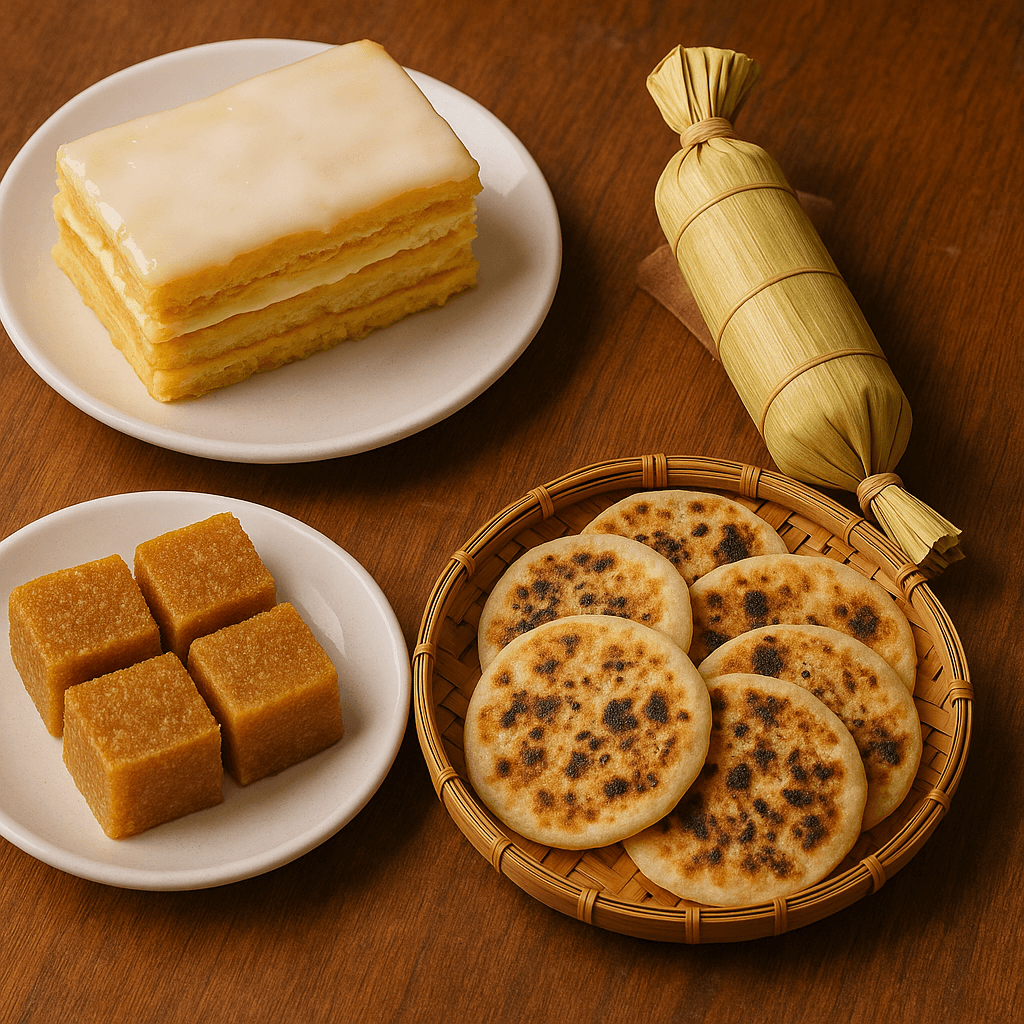
Ilonggo Food in Modern Times
Today, Ilonggo cuisine is experiencing a renaissance:
Chefs are blending tradition with modern flair in gourmet restaurants.
Classic dishes like Batchoy are being reinvented with truffle oil or ramen-style twists.
Ilonggo food bloggers and vloggers are bringing local cuisine to a global audience.
The food continues to evolve without losing its soul.
Where to Try Authentic Ilonggo Food
| Place | Must-Try |
|---|---|
| La Paz Public Market (Iloilo) | La Paz Batchoy |
| Manokan Country (Bacolod) | Chicken Inasal |
| Breakthrough Restaurant (Iloilo) | Seafood platter |
| Aboy’s Restaurant (Bacolod) | Kansi and KBL |
Local carinderias and wet markets are also gold mines for home-cooked flavors.
Ilonggo Food vs Other Regional Filipino Cuisines
| Region | Flavor Profile | Famous Dishes |
|---|---|---|
| Ilonggo | Mild, sweet-sour, earthy | Batchoy, KBL, Kansi |
| Kapampangan | Savory, rich, often creamy | Sisig, Kare-Kare |
| Bicolano | Spicy and coconut-rich | Bicol Express |
| Cebuano | Sweet-savory, grilled | Lechon, Pochero |
While other regions boast bolder flavors, Ilonggo cuisine is refined and balanced.
Cooking Ilonggo Food at Home
Want to bring Ilonggo flavors to your kitchen? Start with:
Pancit Molo: Needs ground pork, shrimp, and wonton wrappers
KBL: Find batuan or substitute with tamarind
Batchoy: Use pork broth, miki noodles, liver, and chicharon
Local Filipino stores or online platforms often carry these ingredients.
Cultural Significance of Ilonggo Dishes
Food plays a role in every major Ilonggo celebration:
Fiestas feature lechon and KBL.
Weddings serve Napoleones and chicken inasal.
Holy Week meals rely on simple vegetable stews.
Ilonggo cuisine isn’t just about eating—it’s about gathering, storytelling, and celebrating life.
FAQs About Ilonggo Food
1. What is the most famous Ilonggo dish?
La Paz Batchoy is the most iconic, known across the Philippines and beyond.
2. Is Ilonggo food spicy?
No, Ilonggo dishes are generally not spicy, leaning more toward sour and savory flavors.
3. Where can I try authentic Ilonggo food outside the Philippines?
Some Filipino restaurants abroad specialize in regional dishes, especially in areas with large Ilonggo communities.
4. What makes Kansi different from Sinigang?
Kansi uses batuan for souring and often includes beef shank with bone marrow, unlike the more common tamarind-based sinigang.
5. Are there vegetarian Ilonggo dishes?
Yes! Dishes like laswa (vegetable soup) and ginataang langka (jackfruit in coconut milk) are vegetarian.
6. What is the Ilonggo word for food?
“Káon” means “to eat” in Hiligaynon, and “sud-an” refers to the main dish.
Conclusion: Celebrating the Heart and Soul of Ilonggo Cuisine
So, what is Ilonggo food? It’s a mirror of Western Visayas’ history, identity, and warmth—offering comforting flavors, creative fusions, and timeless traditions. Every bite tells a story—of family gatherings, Sunday markets, rainy-day comfort, and festive celebrations.
Whether you’re visiting Iloilo, Bacolod, or your local Filipino eatery, don’t miss the chance to taste the heart of the Ilonggo people.
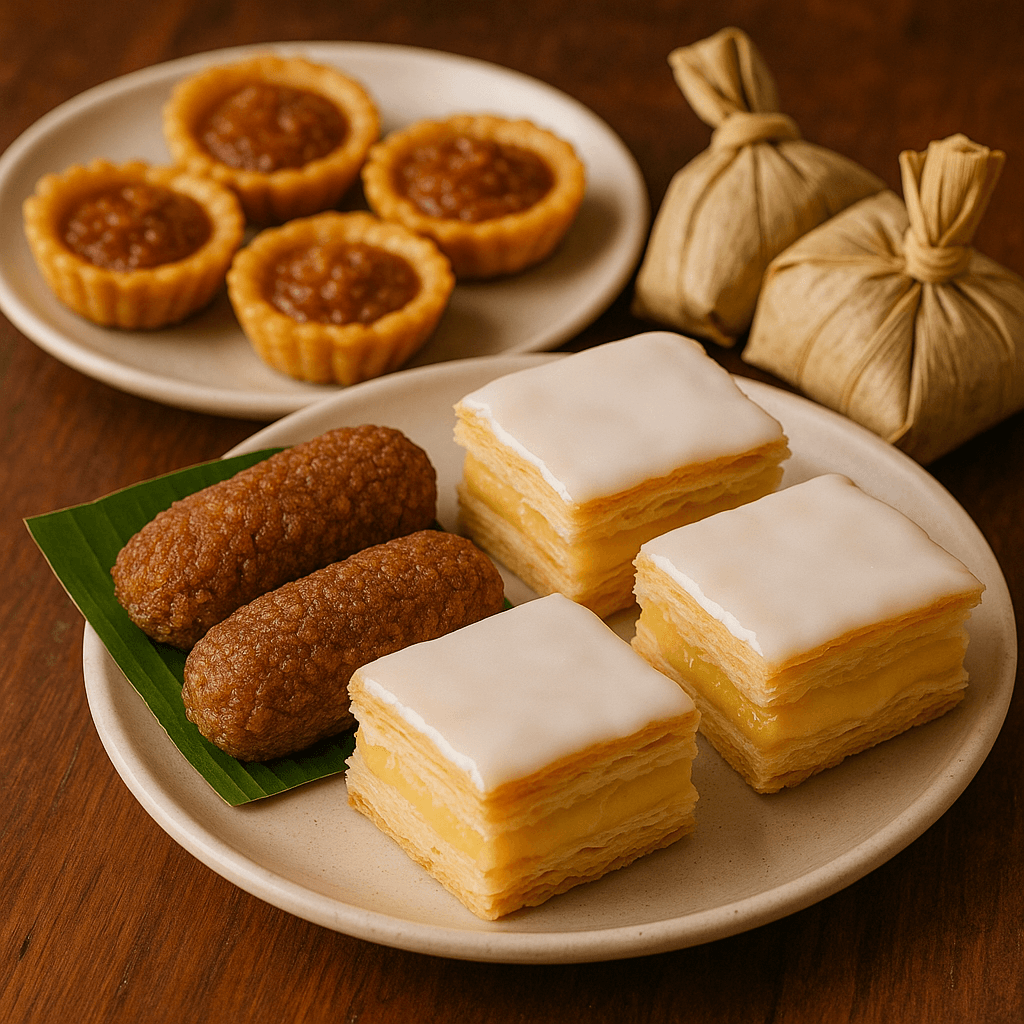
Where to Buy Jocyl’s Food Products
After exploring What is Ilonggo food, bring home authentic Jocyl’s Food Products. Our lineup includes Chorizo de Kalibo, Tocino, Sliced Longganisa, Skinless Longganisa, Embutido, Banana Chips, and Crispy Shrimps. Available at Iloilo Supermarket, SM City Iloilo Supermarket, and Savemore, or order online at https://jocyls.com/shop. Each product features 100% pure meat, no artificial preservatives, no salitre, no extenders, and is Vitamin C fortified—perfect for sharing the taste of the Visayas with family and friends.

Jocyl’s Social Media:
https://www.facebook.com/jocylsfoods
https://www.instagram.com/jocylsfoods
https://www.twitter.com/jocylsfoods
https://www.pinterest.ph/jocylsfoods
https://www.tiktok.com/@jocylsfoodsproducts
Recent Posts
- The Ultimate Guide to Authentic Filipino Breakfast: Why Chorizo de Kalibo Is Taking 2026 to the next level!
- Ultimate Aklan Pasalubong Guide: Authentic Filipino Treasures
- How to Cook Longganisa Without Oil: Easy, Healthy & Delicious Guide
- Ultimate Guide: How to Cook Ilonggo Longganisa – Perfect Every Time!
- What is Ilonggo Food? Discover the Rich Flavors of Western Visayas Cuisine
Recent Comments
Archives
- October 2025
- September 2025
- August 2025
- July 2025
- May 2025
- April 2025
- March 2025
- February 2025
- January 2025
- November 2024
- October 2024
- September 2024
- August 2024
- June 2024
- March 2024
- February 2024
- January 2024
- December 2023
- November 2023
- October 2023
- August 2023
- July 2023
- June 2023
- May 2023
- April 2023
- March 2023
- February 2023
Tags
- Aklan
- Aklan Pasalubong
- Boracay
- Boracay Food
- Boracay Island
- Boracay Pasalubong
- boracay snacks
- Boracay Souvenirs
- Breakfast
- Chicken
- chicken tocino
- Chori Burger
- chorizo
- ChorizoDeKalibo
- chorizo recipe
- Delicacies
- embutido
- embutido recipe
- Filipino Chorizo
- Filipino Cuisine
- filipino food
- Filipino Longganisa
- Filipino Sausage
- foodie guide
- homemade
- Iloilo
- Iloilo Chorizo
- Iloilo Food
- Iloilo Longganisa
- Iloilo Pasalubong
- ingredients
- JocylsFoods
- longaniza
- longganisa
- longganisa recipe
- meat
- Pasalubong
- pinoy recipes
- pork tocino
- recipe
- Recipes
- skinless longganisa
- snacks
- tocino
- tocino recipe


